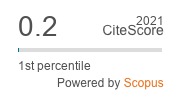Design And Implementation of Analyses on Black Hole Growth across Cosmic Time and Its Relation to Galaxy Evolution
DOI:
https://doi.org/10.17762/msea.v71i4.2217Abstract
We use the most up-to-date hydrodynamic models of how cosmic structures form to study the relationship between how galaxies grow and change and how the supermassive black holes in them change over time. Starting right from the beginning conditions that make sense for cosmology, we follow the dynamics of dark matter, radiative gas cooling, and star formation, as well as the growth of BHs and the feedback mechanisms that go with them. This is something that has never been done before. The way we model the physics of black holes is based on the work we did simulating the collisions of galaxies that were on their own. This project has been going on for a while. At low redshifts, the ratio of black hole mass density to stellar mass density doesn't change much, but the black hole accretion rate density reaches its peak at a lower redshift and changes more than the star formation rate density at high redshift. We find that there are strong links between the masses of black holes and the features of the star systems around them. These correlations match up well with the local relationships that have been reported, but they also suggest (depending on the mass range) that both the normalisation and the slope change slightly with redshift. Due to long periods of exponential growth in places that fall apart quickly and show strong gas imports, our models also make huge black holes at high redshift. These places get a lot of gas from other places. But these early supermassive BH systems aren't necessarily the most massive ones that exist now. This is because quasars that form later tend to grow and become more massive than the early ones.




